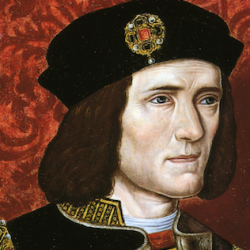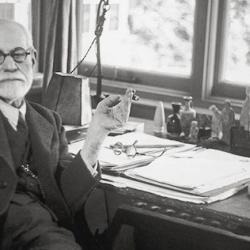In the Weekly Standard, Paul Cantor explains that both Shakespeare and Cervantes aimed their writing at a common target: Chivalry. He describes chivalry as “a noble ideal and at its best it did much to refine an otherwise coarse and brutal world, but it rested on shaky foundations and had many unintended and disastrous consequences. Chivalry was a way of life, a distinctive mode of conducting both war and love. In its purest form, it tried to reconceive war as in the service of love. In literature, the chivalric ideal was embodied in figures such as Sir Lancelot, who, in his noble devotion to Queen Guinevere, always fought on her behalf and in her name. Chivalry was an attempt to give a religious dimension to all aspects of life — to saturate the world with Christianity. The famous chivalric romances sought to civilize war, to temper its savagery with Christian notions of mercy. As chivalric romance developed, the Quest for the Holy Grail became one of its dominant motifs, giving a spiritual and deeply Christian goal to the knights’ striving. Chivalry was bound up with courtly love. A knight was supposed to worship his lady from afar and undergo a spiritual discipline, a quasi-religious purification, in his quest to perfect himself for his mistress’s sake. In chivalric romance, the earthly sexual impulses that ordinarily fuel love between man and woman are redirected in a heavenly direction.”
By the sixteenth century, chivalry had collapsed into the brutality of crusading, and courtly romance put unendurable demands on desire and marriage: “by demanding so much of love — no less than spiritual and even divine perfection — they made the ordinary relations between men and women, on which the future of the human race depends, seem crass and base by comparison with the poetic ideal. The dream of a perfect love left men and women dissatisfied with conventional forms of romance, particularly the commonplace institution of marriage. Courtly love was hostile to marriage and any conventional satisfaction in love. It celebrated infinite yearning and thus called for suffering in love — intense, prolonged, agonizing, hopeless, tragic suffering, since reality can never measure up to the poetic ideal.”
Cantor’s point is obvious for Cervantes, less so for Shakespeare. Cantor claims that Shakespeare’s English history plays exposed the Machiavellian behind the chivalry, the abuse of power justified in the name of sacred kingship. Even after toppling Richard II, Henry IV becomes “bewitched” by the prospect of holy war. His son, Henry V, is a more practical man; he doesn’t try to recover Jerusalem but limits himself to crossing the Channel to invade France. Cantor writes, “Shakespeare’s history plays chronicle the transition from medieval to modern monarchy, and that involves the increasing secularization of kingship. His kings move from high-minded and idealistic motives for war to Machiavellian concern for realpolitik, and they are successful to the extent that they manage to neutralize the impact of the church and its officials on English politics. . . . Like Cervantes, Shakespeare sought to get the holiness out of war and politics.”
This is partly right: Shakespeare does expose the brittleness of medieval kingship. But Cantor leaves it at that, with the impression that Shakespeare was all in with modern politics, where political success depends on having bigger guns and being more ruthless in pursuing self interest. Shakespeare’s plays are more neutral, less ideological, than Cantor suggests. If Shakespeare thinks Richard II outmoded, but the plays are equally skeptical about kings who can successfully manipulate and neutralize the church for their ends. Unabashed Machiavellianism is hardly an improvement over cover Machiavellianism.
Cantor’s take on Shakespeare’s romances is similarly askew. That there was tragic potential in courtly romance would hardly be news to medieval devotees of Tristan. Cantor is right that Shakespeare’s romantic characters are real-life men and women, that their relationships are as prickly as real-life romances, and that he uses humor to burst the courtly bubble. He correctly states that “Shakespeare’s romantic comedies do not incidentally but essentially culminate in marriage, a moderate but enduring form of love. For Shakespeare, romantic love should be a socializing, not an antisocial force. It integrates young lovers into the larger community, enticing them to renounce their otherworldly yearning for the promise of not heavenly but marital bliss (a lower but more attainable happiness).”
Yet Shakespeare’s romances depend on the courtly conception of love’s power, and are constantly ringing changes on the spiritual, ennobling capacity of love. Like Spenser, he depends on the courtly tradition even as he directs it toward consummation in marriage, rather than adultery. Benedict is no courtly lover, Beatrice no idealization of womanhood; yet Benedict is a better man for falling madly in love with her, and she a better woman for loving him with so much of herself that there is nothing left. If Shakespeare is too wise to be taken in by medieval romance, he is also too wise to dismiss it entirely.















